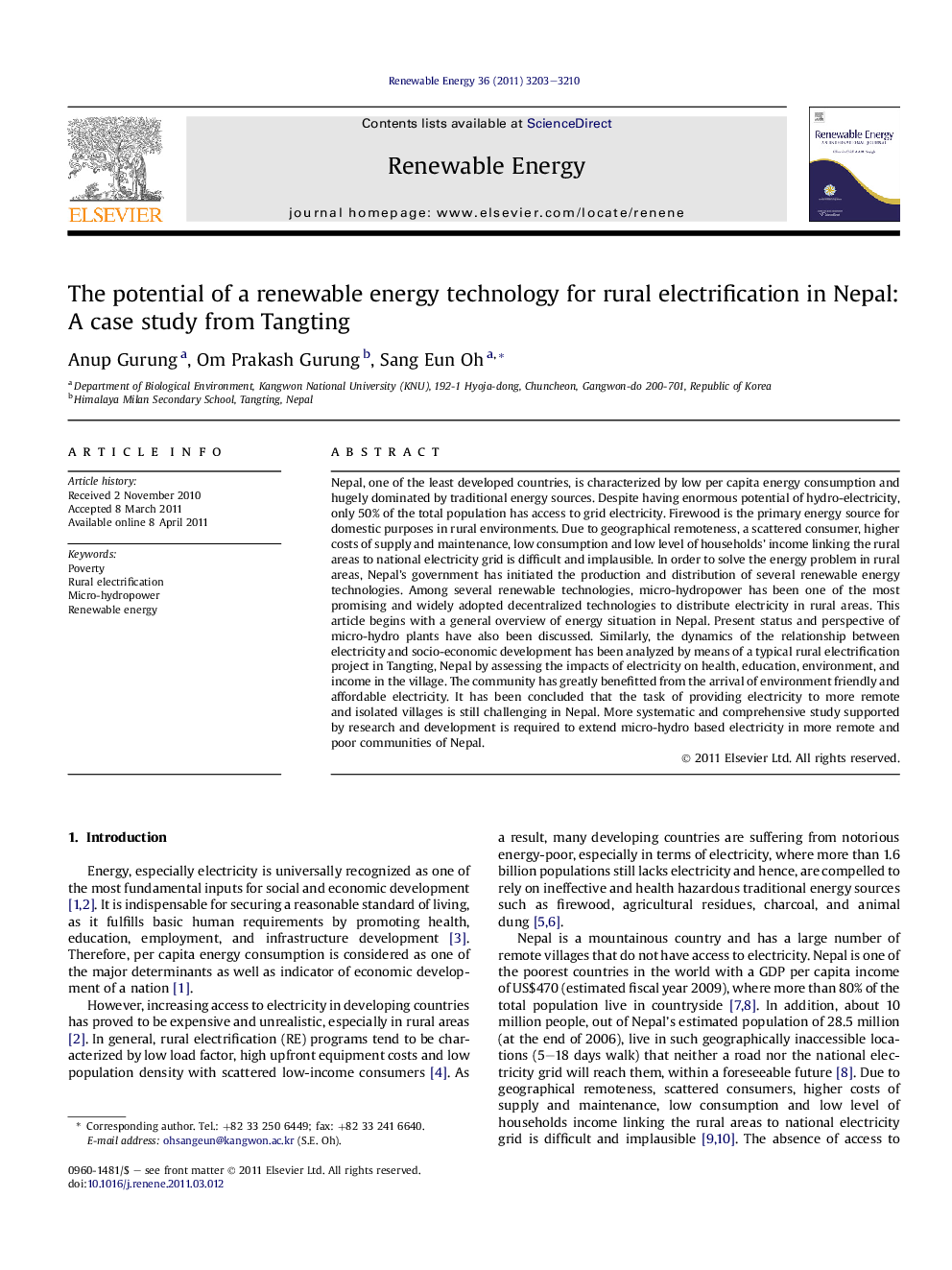| Article ID | Journal | Published Year | Pages | File Type |
|---|---|---|---|---|
| 301363 | Renewable Energy | 2011 | 8 Pages |
Nepal, one of the least developed countries, is characterized by low per capita energy consumption and hugely dominated by traditional energy sources. Despite having enormous potential of hydro-electricity, only 50% of the total population has access to grid electricity. Firewood is the primary energy source for domestic purposes in rural environments. Due to geographical remoteness, a scattered consumer, higher costs of supply and maintenance, low consumption and low level of households’ income linking the rural areas to national electricity grid is difficult and implausible. In order to solve the energy problem in rural areas, Nepal’s government has initiated the production and distribution of several renewable energy technologies. Among several renewable technologies, micro-hydropower has been one of the most promising and widely adopted decentralized technologies to distribute electricity in rural areas. This article begins with a general overview of energy situation in Nepal. Present status and perspective of micro-hydro plants have also been discussed. Similarly, the dynamics of the relationship between electricity and socio-economic development has been analyzed by means of a typical rural electrification project in Tangting, Nepal by assessing the impacts of electricity on health, education, environment, and income in the village. The community has greatly benefitted from the arrival of environment friendly and affordable electricity. It has been concluded that the task of providing electricity to more remote and isolated villages is still challenging in Nepal. More systematic and comprehensive study supported by research and development is required to extend micro-hydro based electricity in more remote and poor communities of Nepal.
► This article begins with a general overview of energy situation in Nepal. ► Present status and perspective of micro-hydro plants have also been discussed. ► Micro-hydro scheme has been found one of the most successful models for the production of clean, environmental friendly and cost effective source of energy. ► Improved health, increased socio-economic condition and saved time for women are some of the major benefits to the users. ► It has been concluded that the task of providing electricity to more remote and isolated villages is still challenging in Nepal.
